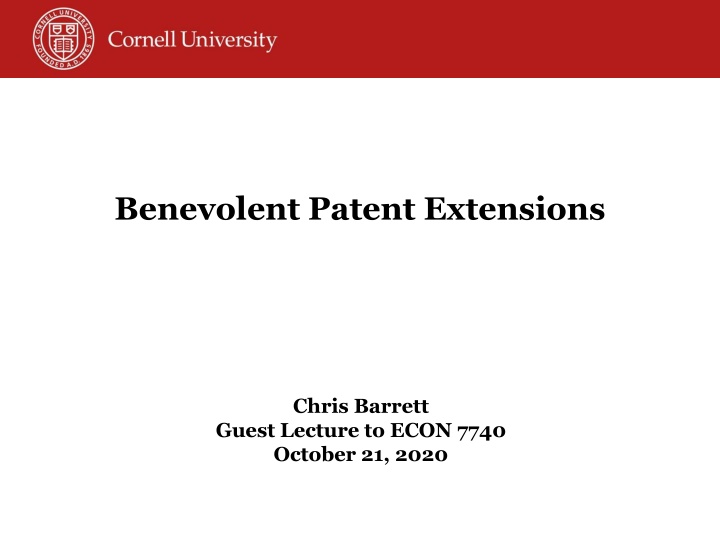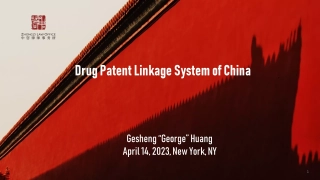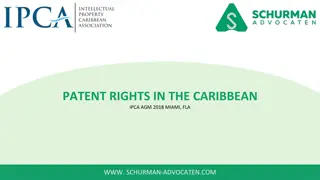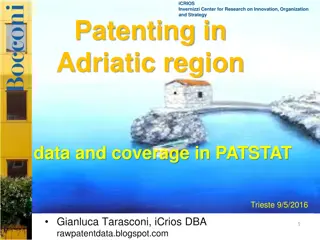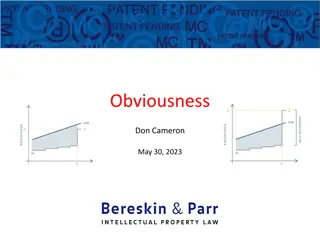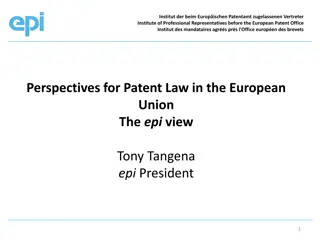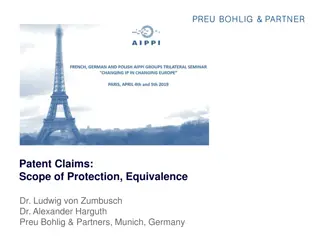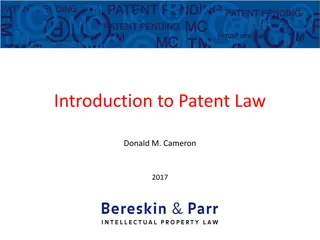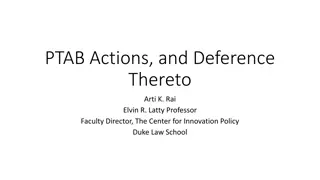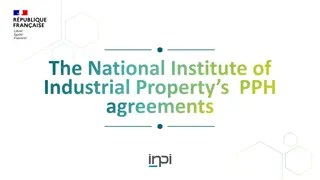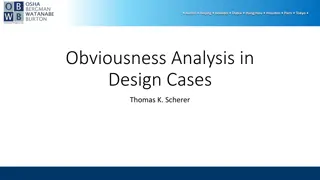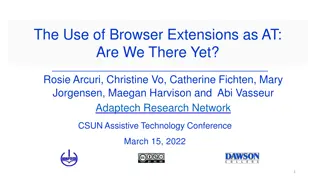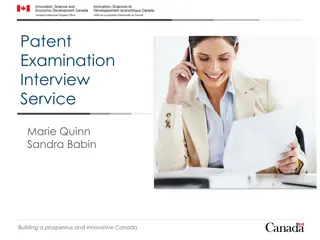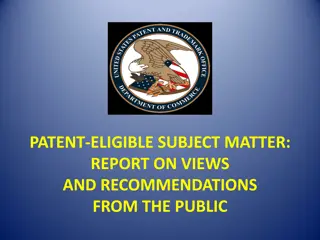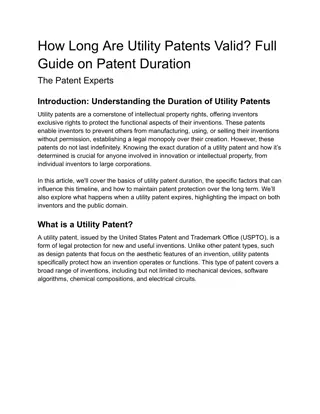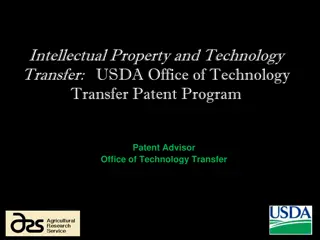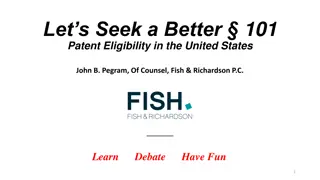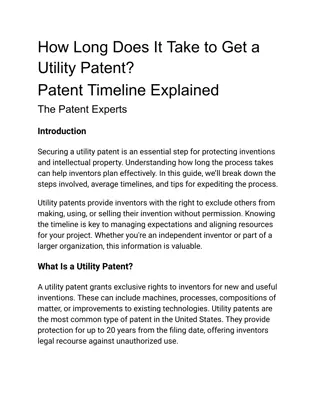Benevolent Patent Extensions
Patents incentivize R&D investments by granting temporary monopoly rights. Benevolent discoveries, intended for charitable purposes, face challenges in obtaining sufficient funding. Alternatives to patents, such as advanced market commitments and prizes, have shown promise. Consideration of patent extensions for benevolent discoveries could provide additional incentives for research in neglected areas.
Download Presentation

Please find below an Image/Link to download the presentation.
The content on the website is provided AS IS for your information and personal use only. It may not be sold, licensed, or shared on other websites without obtaining consent from the author.If you encounter any issues during the download, it is possible that the publisher has removed the file from their server.
You are allowed to download the files provided on this website for personal or commercial use, subject to the condition that they are used lawfully. All files are the property of their respective owners.
The content on the website is provided AS IS for your information and personal use only. It may not be sold, licensed, or shared on other websites without obtaining consent from the author.
E N D
Presentation Transcript
Benevolent Patent Extensions Chris Barrett Guest Lecture to ECON 7740 October 21, 2020
Patents Patents: A tool to incentivize R&D Inventor investments in R&D involve significant sunk costs (can be a LOT ~$800mn/ marketed pharmaceutical) If can t keep R&D discoveries secret, big externalities. A patent exchanges public revelation of details of discovery for fixed period of state-enforced temporary monopoly power (right to prevent others use of discovery). Resolves externality. Inventor temporarily captures (all?) net gains. Result: value of discovery is the (expected) monopoly rent arising from the patented product/service. Invest more in R&D than if incur sunk costs then compete post-discovery.
Benevolent discoveries Patent value low for discoveries w/prospective monopoly rent < R&D cost. One case of particular interest: Commercial mkt limited by poverty of beneficiary population. Limited mkt in high-income world but big human impacts in poor countries. Ex: Neglected tropical diseases and disease-based poverty traps: - dengue fever, onchocerciasis, schistosomiasis, trypanosomiasis, etc. affect > 1bn Orphan crops: - Cassava, Cowpea, Millets, Plantain, Tef, etc. >100 mn ha (Tadele 2019) We shall call discoveries for charitable rather than profit purposes benevolent . (Could also be for, e.g., rare childhood diseases a la Cure Rare Disease - Rich Horgan 14)
Benevolent discoveries Patent incentives elicit few benevolent discoveries. Most BDs are open source discoveries based on public/philanthropic R&D finance. Exception: incidental, fortuitous discoveries (e.g., eflornithine for trypanosomiasis and hirsutism). Why rely on lucky discovery of a secondary use? But massive investment unmet needs for R&D for benevolent purposes. Estimated needs beyond present private and public investment: - $26 bn/year to address hunger (Laborde et al. 2020) - $1bn/year to eliminate NTDs (Fitzpatrick et al. 2017)
Alternatives to patents Patents: A tool to incentivize R&D Advanced mkt commitments: GAVI, etc. (Kremer et al. 2020) - Resulting pneumococcal vaccine saved ~700K lives Prizes: Napoleon and canning food; Lindbergh and Orteig Prize, Ansari X Prize, etc. (Wagner 2011) Issues: - Promise keeping (either reneging, or portfolio collapse) - R&D still insufficient even w/AMCs and prizes
Patent extensions Patent law in the US and other jurisdictions already allows extensions/adjustments has exceptions for extending a patent beyond statutory term (LLOC 2016). In US, a Patent Term Adjustment allows for extending the term of a U.S. patent if PTO is slow to act on a filing. Why not allow for adjustment/extension in exchange for benevolent discovery?
BPE: how might it work? For an invention that is non-obvious, novel, useful and benevolent In filing for patent, the inventor can request extension of other, existing non-essential patent in exchange for: (i) Attestation that they will not enforce their patent right (attempting to enforce the patent would then void the patent filing); or (ii)Dedicate to the public the terminal part of the patent term (35 U.S.C. 253(b)). PTO must assess (i) benevolence of invention, and (ii) non-essentiality of patent to be extended. If both criteria satisfied, then BPE request granted.
What is non-essential? Only non-essential patents eligible for extension. Any patent essential to maintain healthy, free life (e.g., no vaccines, life-saving devices/drugs, transport safety equipment, etc.) ineligible for extension. Examples of eligible patents: business software, sporting goods, leisure and entertainment goods and designs, male baldness treatments, etc. Target: high-value luxury lifestyle products/designs (ideally very income elastic / very price elastic demand)
Key implications 1. Value boost: Benevolent patent valued based on market for extended patent, not on benevolent discovery s direct mkt value. Many non-essential patents return $100s mn/yr. 2. Voluntary: No inventor obliged to surrender patent rights. 3. Inventor still gets the patent but cannot enforce. Generic competitors can produce/sell benevolent discovery. 4. Who is potentially made worse off? (i)Generic producers who would enter at patent expiration; (ii) Purchasers of patented product beyond original expiration. Both are voluntary no one compelled to buy nor to enter and compete 5. Prospective investors: non-practicing entities; cash-rich digital tech firms; firms needing image boost.
Possible benefits Induced R&D capacity in Global South: Benevolent discoveries may require in situ R&D: Subject populations for human trials; agroecological conditions for crop trials; etc. Encourage investment in R&D facilities and human capital: Much of Global South deficient in both. If a big tech firm wants to extend app patent, a strategy becomes to invest in labs in LICs.
Possible benefits Restorative justice: WTP/ Wealth > 0 : Commercial market potential for a discovery arises (partly) due to wealth differences. Why do wealth inequalities exist? At least in part due to prior generations transgressions: colonial extraction, slavery, proxy wars, etc. BPEs offer a fully voluntary mechanism to tap the fruits of (partially) ill-gotten wealth to address the charitable needs of its victims. Partially repair the harm caused by past damages done: an indirect tool for restorative justice? No aid required.
Next steps Write up idea as article Draft legislation: amend Title 35 of US Code
Thank you Thank you for your interest I invite your comments
